
Peking Opera, also known as Beijing Opera, is a traditional Chinese theatrical art form that originated in the late 18th century during the Qing Dynasty. Renowned for its elaborate costumes, vibrant makeup, acrobatic movements, and distinctive vocal style, Peking Opera conveys stories from Chinese history, folklore, and classical literature. On November 16, 2010, Peking Opera was inscribed on the Representative List of the Intangible Cultural Heritage of Humanity.
Classification of Roles in China Peking Opera
The Peking Opera features four main role types, each with distinctive characteristics in terms of costume, makeup, movement, and vocal style.
a) Sheng/生 (Main male role)

Sheng is a collective term for positive male roles, and roles are further divided into subtypes:
– Xiao sheng (young male)
– Wu sheng (martial male)
– Lao sheng (old male).
b)Dan/旦 (Female role)

Dan represents female roles, and actors in this category portray a wide range of female characters. Dan roles are further divided into subtypes such as Qingyi (virtuous and refined), Huadan (playful and vivacious), Laodan (older female), and Wudan (martial female).
c)Jing/净 (Painted face male role)

Jing refers to painted face male roles, and actors in this category often play powerful and heroic characters, such as generals, warriors, or mythical figures.
d)Chou/丑 (Male clown role)

Chou represents the comic or clown roles, and actors in this category play characters that provide comic relief and entertainment. Chou roles are known for their exaggerated facial makeup, featuring white patches around the eyes and nose. The Chou characters use humor, witty dialogue, and physical comedy to engage the audience, balancing the more serious elements of the performance.
Meanings of Colors Peking Opera Face Makeup
In Peking Opera, the colors of facial makeup, also known as “jing,” play a significant role in conveying information about a character’s personality, traits, and moral qualities. The intricate facial makeup is a form of symbolic language that helps the audience quickly identify and understand the nature of each character. Here are some common colors and their associated meanings in Peking Opera facial makeup.
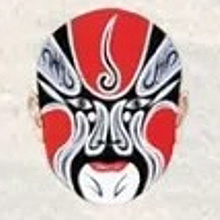
Red: Characters with red facial makeup often represent positive qualities such as heroism, bravery, and righteousness. For example, a red face might be used for a loyal general or a heroic figure.

Black: Characters with black facial makeup are often forthright, honest, and uncompromising. This color is commonly used for roles like warriors or officials with a strong sense of justice.

White: White symbolizes craftiness, deceit, and treachery. This color might be used for roles like scheming ministers or villains.

Purple: Characters with purple facial makeup often represent wise and mature individuals. This color may be used for roles like elder statesmen or wise scholars.
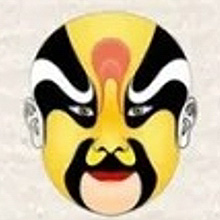
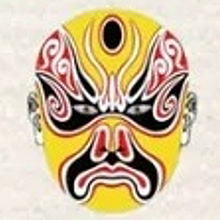
Yellow and gold: Characters with yellow or gold facial makeup are often associated with powerful and ambitious figures. This color may be used for roles like emperors or high-ranking officials.
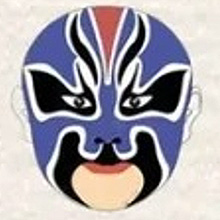
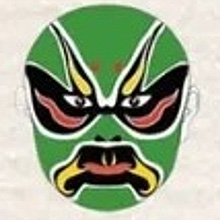
Blue and green: Characters with blue or green facial makeup often portray fierce, impulsive, and aggressive personalities. This color is commonly used for military commanders and warriors.
The Dress Code of Peking Opera Characters
The dress codes in Peking Opera are an integral part of the visual spectacle, contributing to the overall artistic expression and characterization of the performers. Peking Opera costumes are elaborate, colorful, and rich in symbolism, reflecting the characters’ roles, social status, gender, and even their moral qualities.
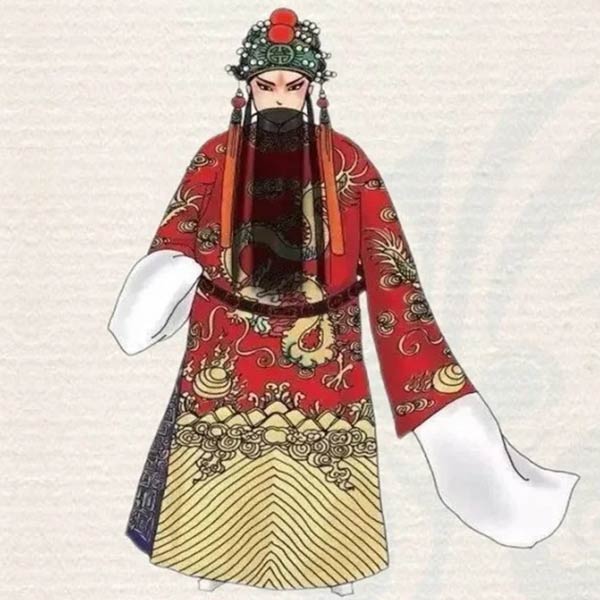
Male Mang
‘Mang’ is the emperor and generals in formal occasions to wear clothing, equivalent to the current gowns. The status of those who wore the ‘Mang’ was extraordinary.
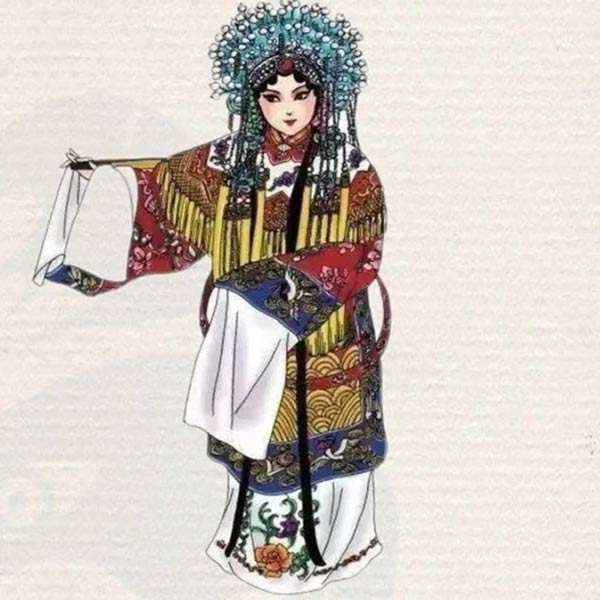
Female Mang
Like the male mang, the female mang is the most dignified dress for noble women such as queens, concubines, princesses and ennobled ladies.
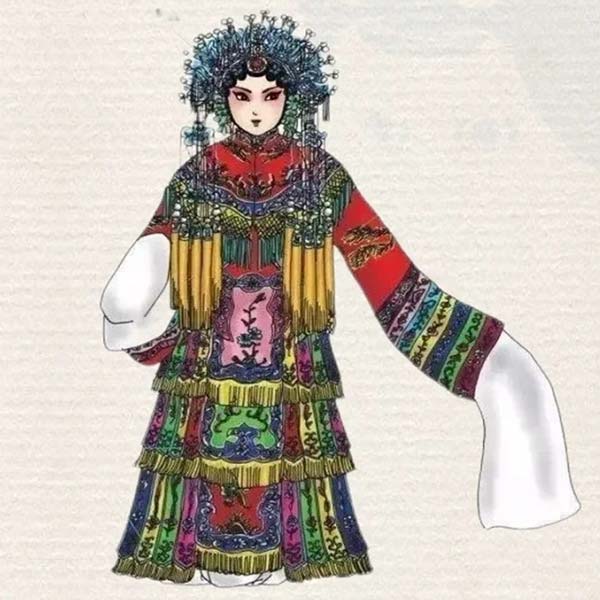
Guan Dress
Like the Mang, the Guan dress is the daily attire for noble women, such as princesses.
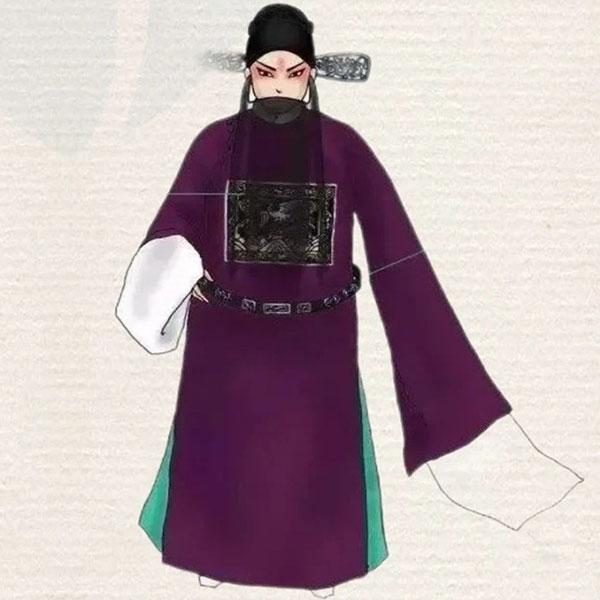
Guan Clothes
The guan clothes are the working clothes of the civil officials. For those civil officials who are not yet qualified to wear a Mang, this is the most formal garment.
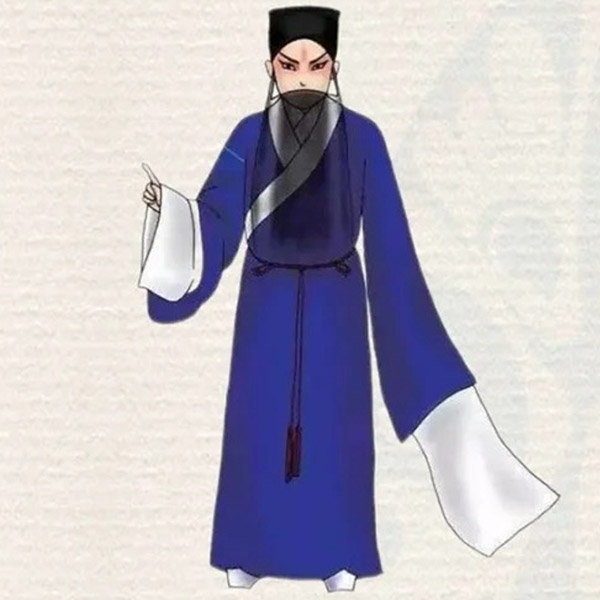
Xue Zi
Xue Zi is a type of casual wear that can be worn by both men and women, young and old.
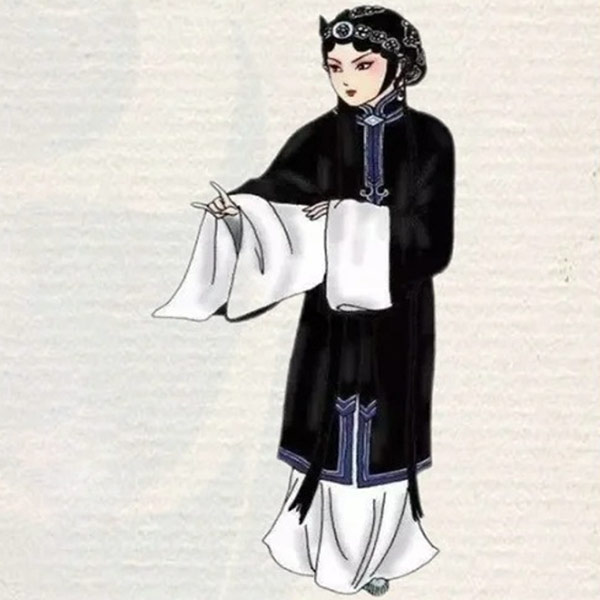
Black Female Xue Zi
This is the most commonly used costume, also known as “Qing Yi”. The women who wear this costume are decent and dignified, but they have a rough fate and live in poverty.
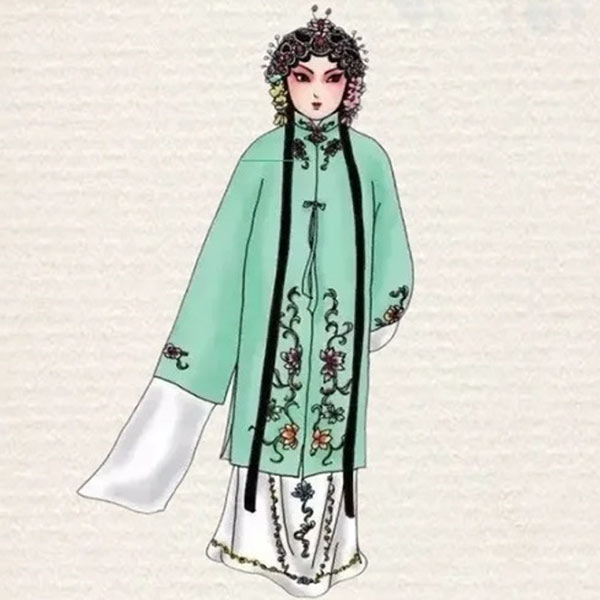
Embroidered Female Xue Zi
This is the daily dress of the Dan character, and most of the women who wear embroidered xue zi are the daughters of wealthy or influential family or young ladies.
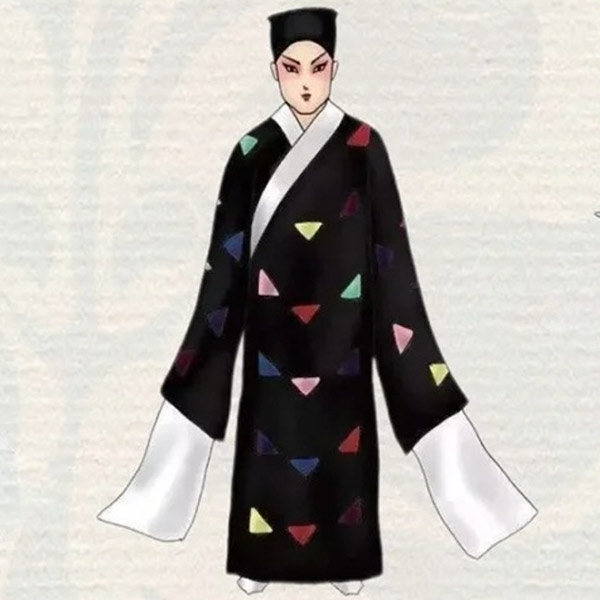
Fortune Clothes
Fortune Clothes are also a kind of Xue Zi, which are actually the clothes of a beggar, full of patches, and are worn by the characters when they are poor to the extreme and in trouble. Anyone who wears fortune clothes on the stage of Peking Opera, although poor and downtrodden, will later be blessed with good fortune, and will really come back to life.
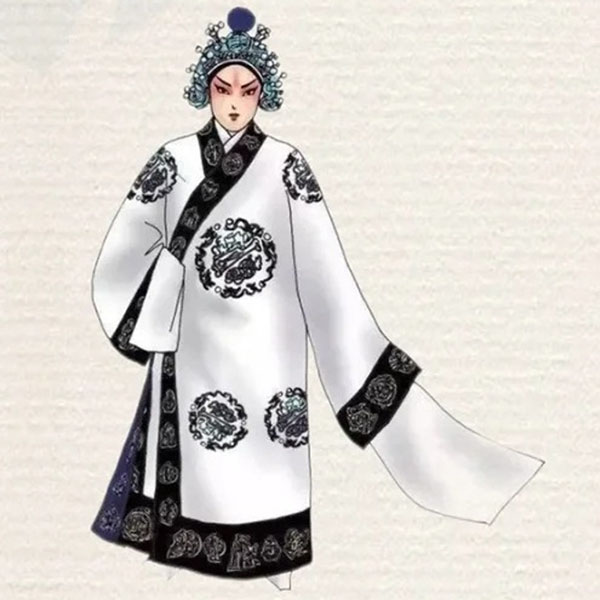
Kai Chang
It is a civilian garment worn on a daily basis by men with martial arts or power.
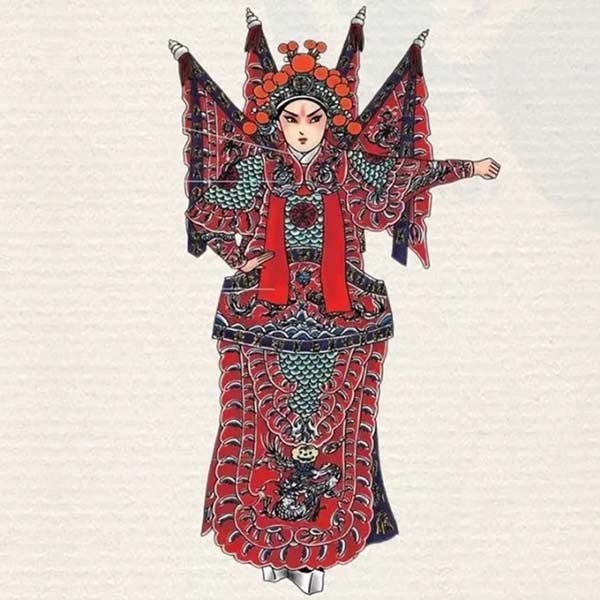
Long Kao
Long Kao is the armor that must be worn by stage generals when they ride horses and fight battles.
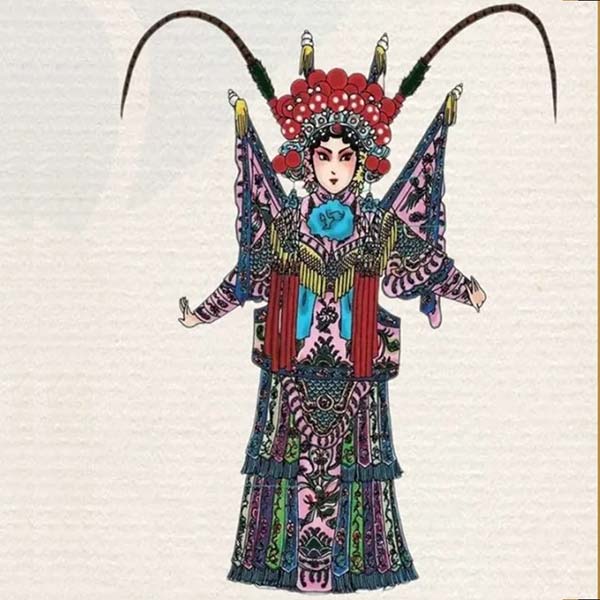
Female Kao
Female Kao is the armor worn by female generals. The Peking Opera stage has celebrated many women heroes.
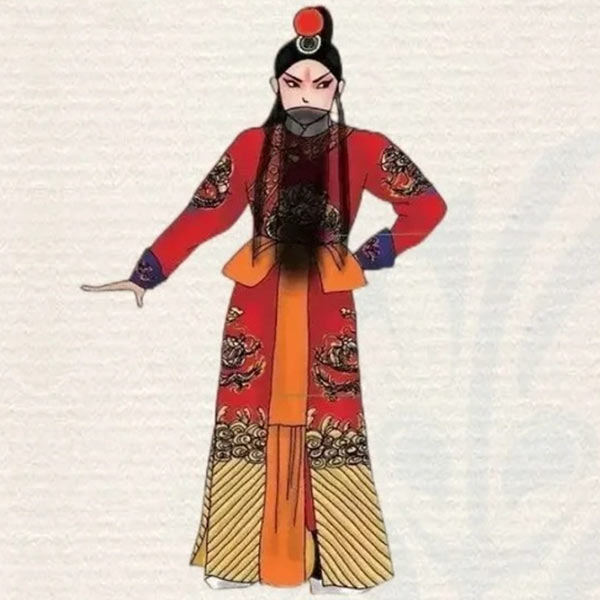
Arrow Clothes
Arrow Clothes were worn by men while riding horses, hunting, and investigating cases. Additionally, military generals, who were captured and had their Long Kao removed, also wore Arrow Clothes.
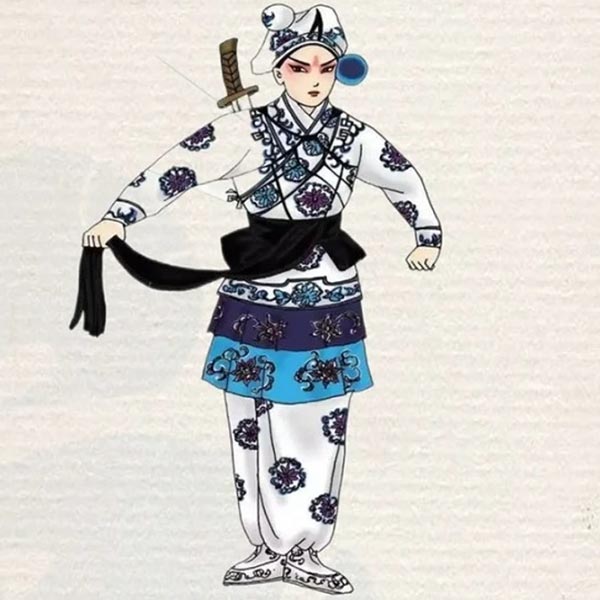
Bao Clothes Bao Pants
Bao Clothes Bao Pants, also known as heroes’ clothes, are worn by individuals proficient in martial arts.
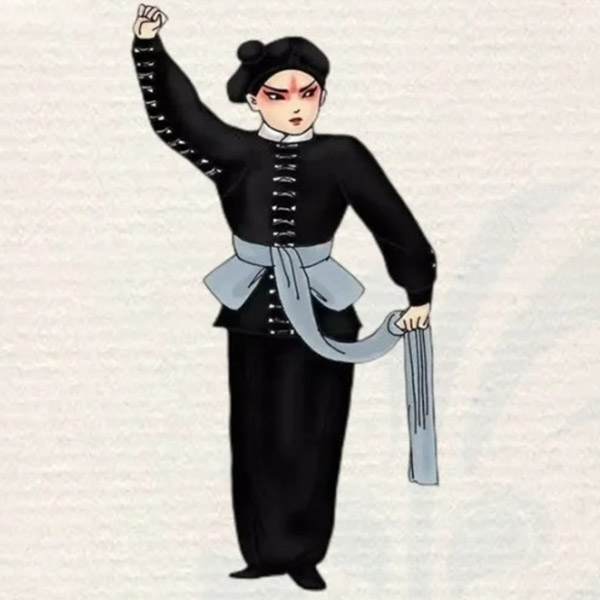
Quick-change Costume
Similar to the Bao Clothes Bao Pants, the Quick-change Costume is also a kind of short and compact dress for hero and righteous individuals skilled in martial arts to wear.

Bagua Clothing
Bagua Clothing belongs to the special attire in Beijing Opera costumes, specifically designed for characters embodying wisdom, resourcefulness, and the traits of a Taoist master. The patterns on Bagua Clothes depict the eight trigrams in Taoism.
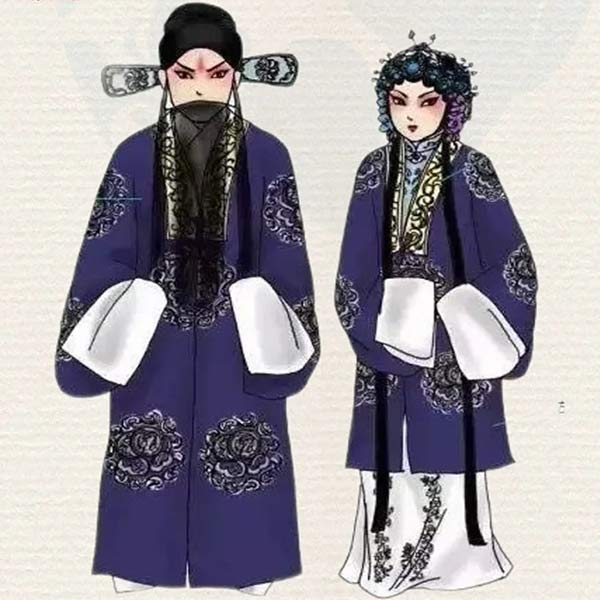
Male Pei and Female Pei
The Male Pei is a casual attire suitable for men of various social standings, from emperors to village gentry. Similarly, the Female Pei is akin to the men’s version, and unmarried girls can also wear capes. On stage, loving couples may choose to wear capes of the same color and pattern to symbolize they love and respect each other, a style referred to as the ‘Couple Pei’.
Common Props in Peking Opera
Tables and Chairs
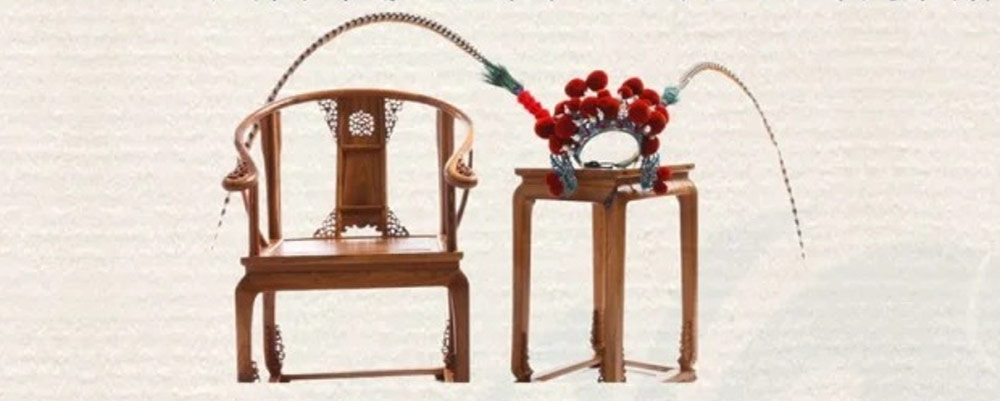
Tables and chairs play a crucial role as versatile and symbolic props on the Peking Opera stage. They not only represent various scenarios and set the stage’s ambiance but also provide insights into the art of arrangement. For instance, chairs positioned behind a table signify settings like courts, government offices, halls, studies, and restaurants. On the other hand, when chairs are placed in front of a table, it signifies scenes within the palace’s inner courtyard, boudoirs, and chambers.
A table with two chairs, one on each side, indicates a gathering of two hosts and two guests, portraying scenes of casual conversations at home or receiving distinguished guests in private. Meanwhile, a table with a single chair nearby may symbolize a hillock. A lone table can transform into an embroidery tower, a boat, a bed, or a couch. Diagonal placement of a table may represent a well, a bridge, or a wall. In the storyline, characters like Wu Sheng and Wu Chou might execute a heel strike to overcome the wall.
When a chair is positioned diagonally, adorned with the white waist skirt of a female character, it becomes a loom or serves as a kiln door or prison door. Lastly, two chairs placed back to back, with bamboo poles tied on the left, right, and above, draped in a red tent, symbolize the setting of a wedding bed.
Horsewhip

A horsewhip is a prop crafted from rattan with silk tassels. For those without martial arts skills, the whip is adorned with three tassels, while those proficient in martial arts wield a whip with five tassels. The various techniques employed by actors in holding the horsewhips can symbolize actions such as riding and leading a horse. Additionally, the diverse colors of the whips may represent different hues of horses.
Oars
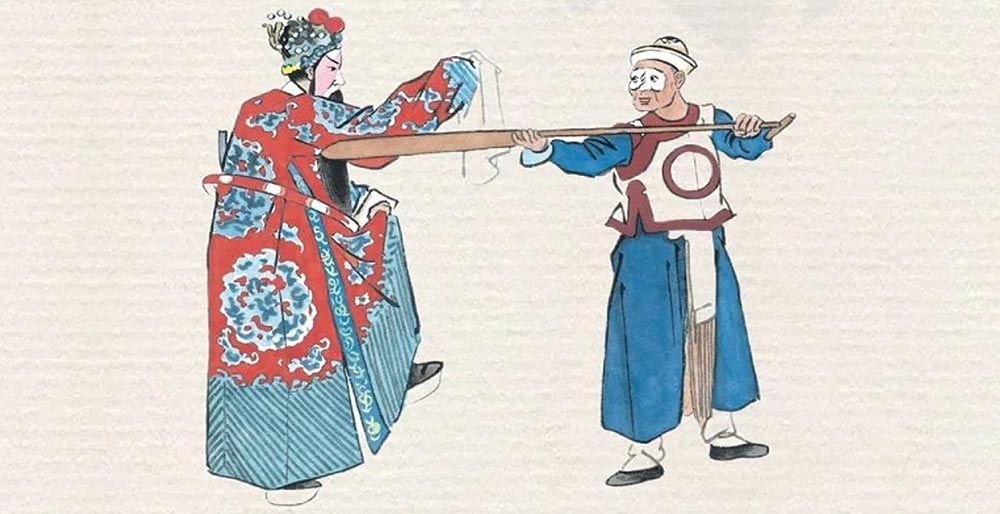
The oars used in Peking Opera are smaller than actual life-sized oars, particularly those designated for the Dan character. These oars are more ornate and exaggerated, adorned not only with colorful drawings but also embellished with large satin flowers.
In Peking Opera performances, the left side of the stage symbolizes the boat, whereas the right side represents the shore. The boatman stands on the left side, holding the flat end of the wooden pole, symbolizing ‘taking the handrail.’ People on the boat must leap from the oars inside the boat; jumping from the oars outside (i.e., those closer to the audience) would signify jumping into the water.
Car flags
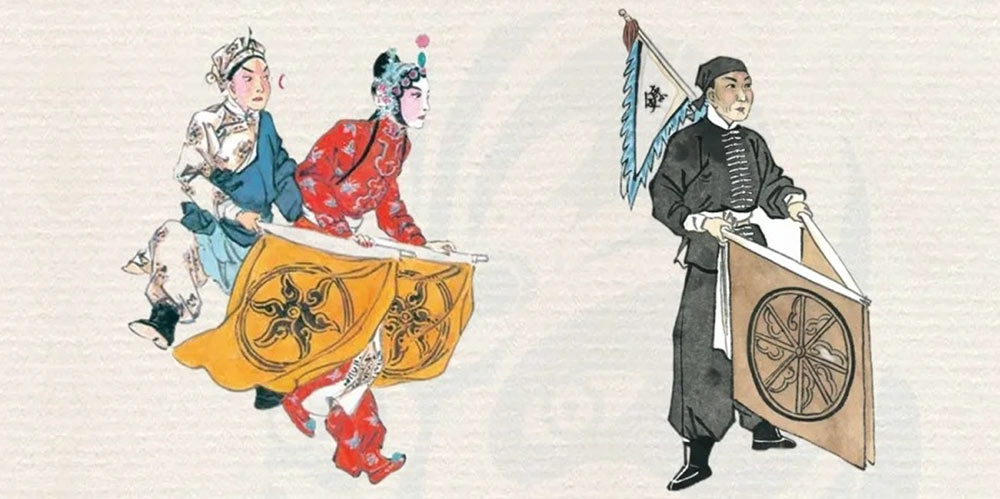
The car flag is a square piece of yellow cloth with a wheel-shaped pattern painted on it. It is attached to a short pole positioned between two flags, and this ensemble symbolizes vehicles. The ‘man in the car’ stands in the center of the two flags, gripping the flagpole by hand. The flagpole itself represents the ‘carriage,’ with the ‘passenger’ positioned at the front and the ‘coachman’ at the back.
When the ‘car,’ laden with goods, ties the front ends of the two flags together using a rope, it signifies that the car’s entrance is closed. This visual cue ensures that the audience recognizes that the car is loaded with goods.
Table Surrounds and Chair Capes
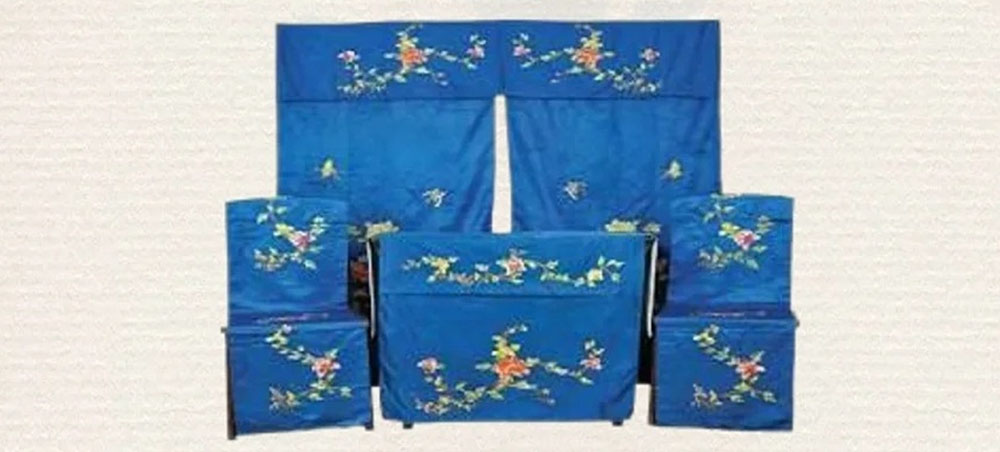
Table surrounds and chair capes are typically sold in sets, often featuring satin embroidery. They come in various colors and patterns, strategically chosen to enhance the portrayal of different environments. For instance, yellow is commonly used in palace settings, red is prevalent in both palace and official families, pink is employed in the boudoirs of unmarried young ladies, blue is associated with less affluent families, and white with a blue border pattern is utilized in mourning hall.
The classic repertoire of China Peking Opera:
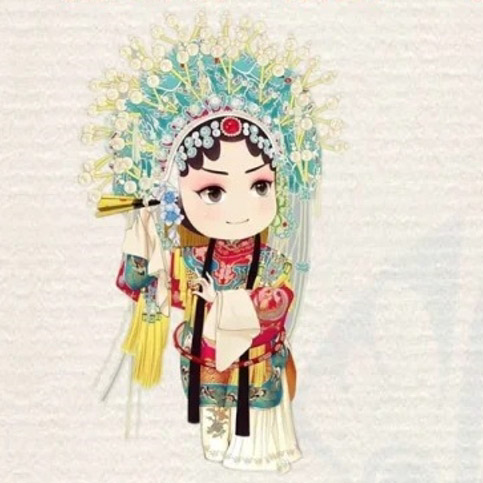
“The Drunken Beauty” Guifei Yang
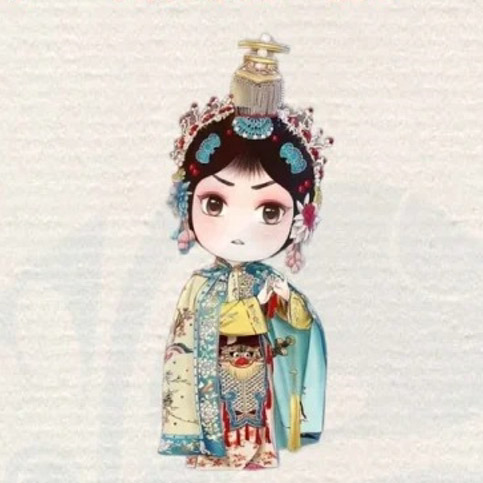
“Farewell My Concubine” Ji Yu
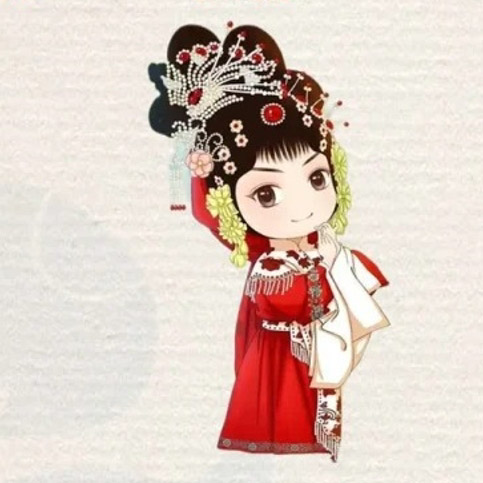
Matchmaker
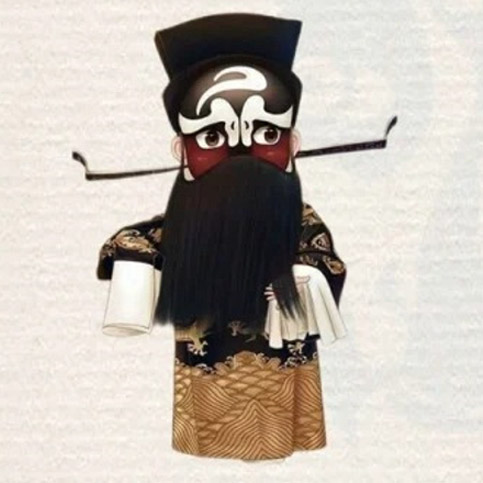
“Case Zha Mei.” Qintian Bao
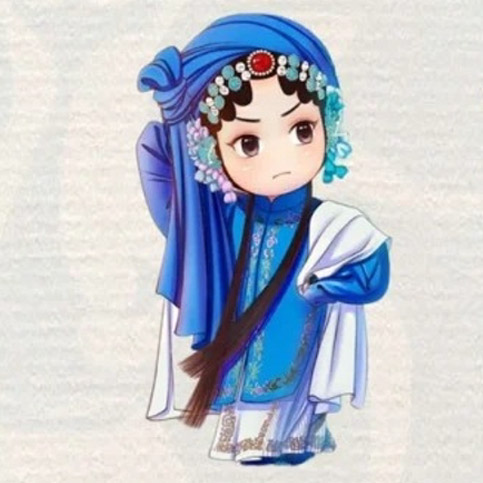
“The Locked Linen Pouch” Xiangling Xue
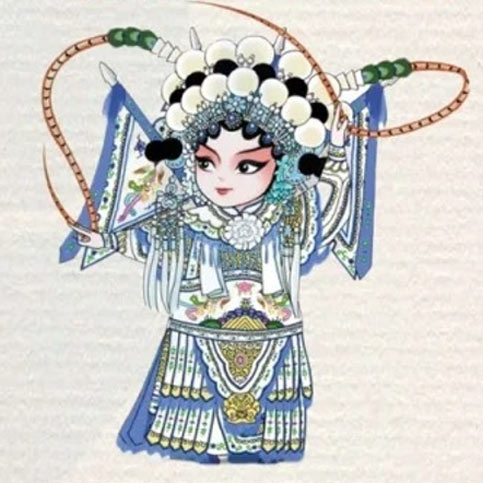
” Guiying Mu Takes Command” Guiying Mu
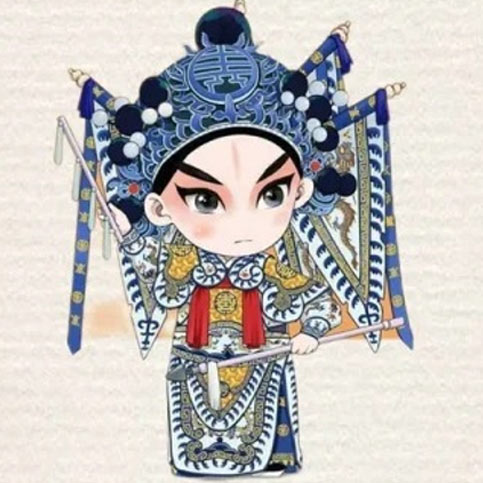
“Changban Po” Yun Zhao

“The Phoenix Returns to Its Nest” – Xue’e Cheng
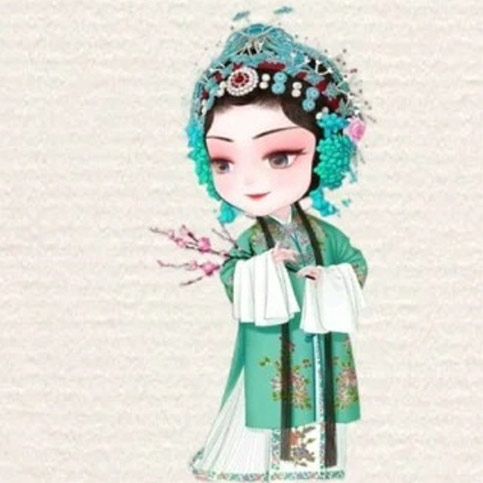
“Dream in the Garden” Shiniang Du

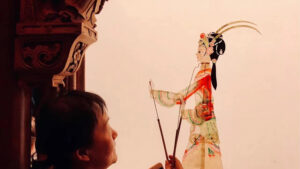
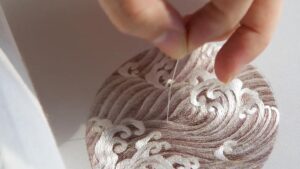
Leave a Reply